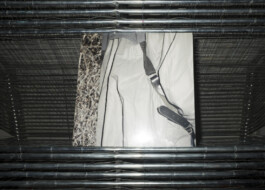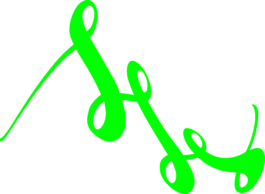
Mother of the House
2025
spatial installation
The installation «Mother of the House». explores questions of femininity, historicity, the fragility of ownership, and aesthetic struggles through a specific architectural object: the Villa Tugendhat in Brno, built in 1930 by Mies van der Rohe. After the Tugendhat family fled into exile, the villa was repeatedly repurposed and structurally altered from the beginning of the Second World War onwards. Following its original habitation by Grete Tugendhat and her family, it served, among other things, as a design office for Nazi aircraft engines, quarters for soldiers and horses of the Red Army, a dance school, a children’s hospital, and a site of political ceremonies. Installation views Landesmuseum Wiesbaden, group exhibition «4.0–Vordemberge-Gildewart-Nominées». Filmcredits: regie by Tatjana Stürmer, performed by Paula Dominici, choreography by Paula Dominici and Tatjana Stürmer, camera by Lukas Rehm, light by Tilmann Rödiger, filmed at Villa Tugendhat, Brno, and Stoneworkshop by Gies Rupp, Hohenahr-Erda.
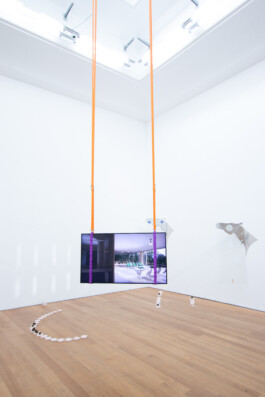
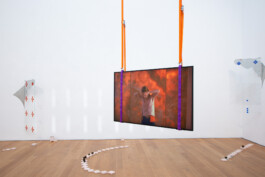
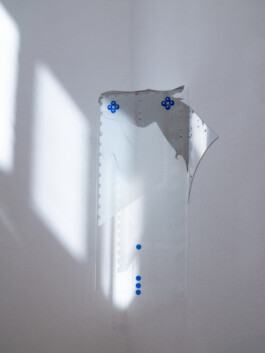
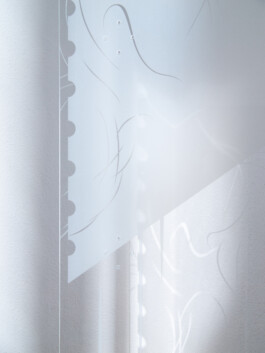
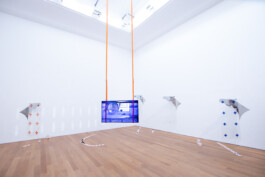
Kitchen Scenes
2025
12" LP
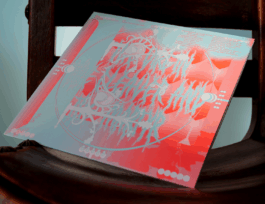

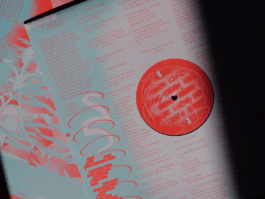
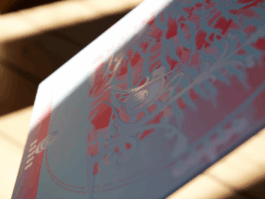
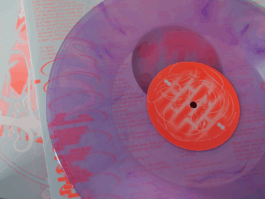
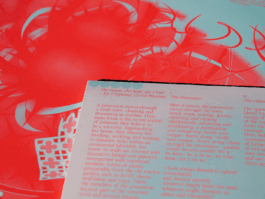
Große Margarete
2025
3D-printed + fired sand, plaster, earth minerals
This installation explores the complex and fragmented legacy of Margarete Renner, also known as
»Die schwarze Hofmännin,« a woman mythologized as both a monstrous figure and a proto-revolutionary heroine. Emerging from historical accounts of the 16th-century German Peasants’ War—often written by the victors—Renner’s image has shifted over centuries: from demonized rebel to socialist icon to feminist symbol. In this work, her figure, enlarged to a monstrous scale, has invaded the exhibition space, pressing through walls in fragmented forms. Etchings and drawings on her giant surfaces reflect the layered narratives projected onto her. She becomes a living archive, embodying history’s distortions and silences.
Produced with Kunsthalle Vogelmann Heilbronn, curated by Marc Gundel and Angelina Balandin.

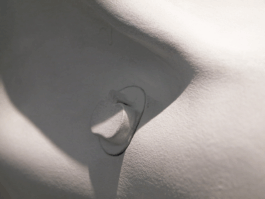
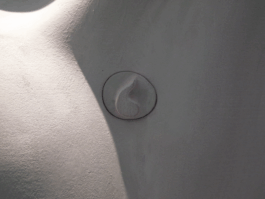
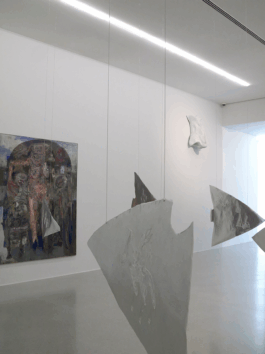
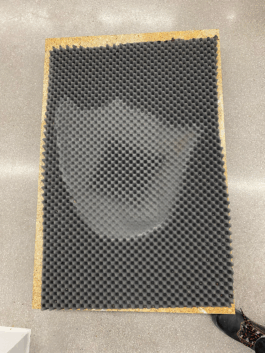
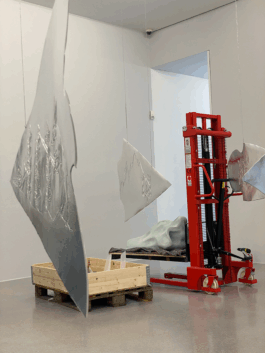
Binding the Moment
2024
3000m copper chain, textile suits, perforamance ground at Ornamenta24, Pforzheim
A wooden pavilion turned temporary chapel reinterprets traditional wedding elements–bridal fashion, metal, and the role of the officiant–to create a space that celebrates any type of relationship, not just romantic ones. Upon entering, a cascade of metal chains hangs from the ceiling, a collaboration between Diane Hillebrand, Tatjana Stürmer, and Black Forest-based chainmaker Binder-Gruppe. These chains symbolise connection, forming an ever-changeable web. Beneath them stretches a room-filling, wearable sculpture by Philipp Schueller, who worked with left-over suits and textiles from Digel.
The Binding Chapel is a space dedicated to celebrating all kinds of “ships”– relationships, friendships, kinships, and situationships. Here, visitors of all ages, backgrounds, and species, whether alone, together, or as a collective, are invited to step into the work and intertwine in a spiral, as a way of committing to their mutual relationship.
Realized in collabroration with Diane Hillebrand, curated by Willem Schenk, produced by Ornamenta24, installation view at Wildpark-Pavillon, Pforzheim, and with performances within the chapel by Kasper Boosmanns, Juliane Schmitt, Lidewij Edelkoort, Harald Glöckner and others. Images: Karolina Sobel.
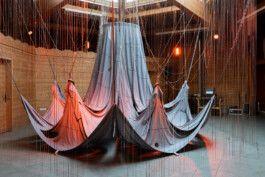
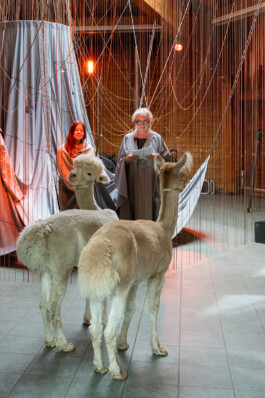
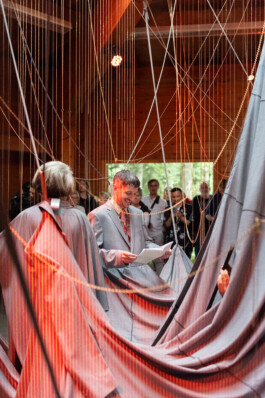
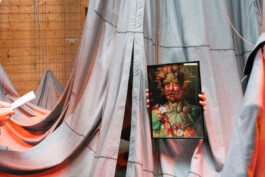
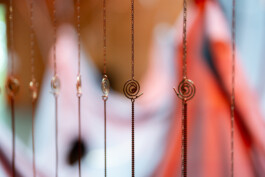
The House, the Body the Child
2024
4.1-spatialsound
The House, the Body, the Child–My Corporeal, Cereal Phantasy works out of (my) archive. Its central questions is the knowledge economy and the question of who owns and exercises power over the knowledge created. The starting point for the installation is the 1:1 scale replica of the Memmingen Chinese Room from the previous exhibition. This representative room is overwritten by a new repeat wallpaper. Created in screen printing for the exhibition, it takes up the media technology of witch-hunting via the invention of letterpress printing and its possibility of endless reproduction and appropriates it as a self-determined new technology. Interspersed with numerous symbolic forms and plants from Art Nouveau and (as said) the old witches' gardens such as devil's cherry, wolfsbane and ergot, the ornamental-labyrinthine multi-plied space makes room for the figure that now lives in it for the duration of the ex-hibition via the 4.1. sound and spatial installation.
Realized in collaboration with electronic musician and artist Manuel Sékou, curated by Axel Städter, produced with MEWO Kunsthalle Memmingen, vocalist Clare Michelle Tunney. Installation view at Kunsthalle Memmingen, images: Carsten Eisfeld, Manuel Sékou and Tatjana Stürmer.
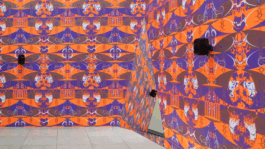
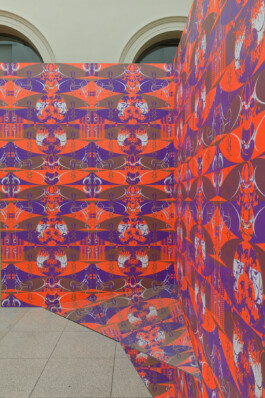
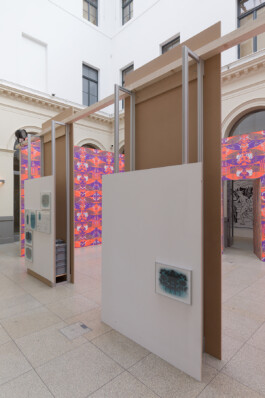
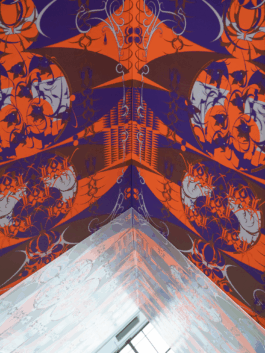
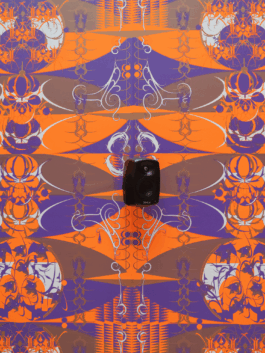
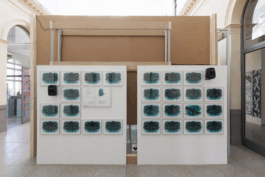
You Loved an Image
2023
publication design
Charlotte Rohde (b. 1992 in Aachen, lives and works in Berlin) explores how type—as an interface between image and language—shapes feminist discourse within our societies. Her multidisciplinary yet consistently language-based work interweaves reflections on pop culture, power, and hyperfemininity, as well as the exaggeration of femininity. Since 2022, she has been serving as a substitute professor of typography and type design at the Bauhaus University Weimar (2022–2024). In her artist book You Loved an Image, designed and visually interpreted by Tatjana Stürmer, she brings together texts—ranging from poetry, prose, essay, and diary entry—with graphic and artistic work and experimental typography, investigating the semiotics of contemporary femininity. Published by DISTANZ, Berlin, edition of 300, printed at Pöge Druck.
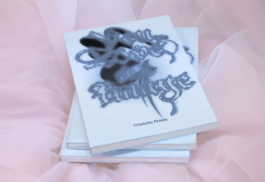
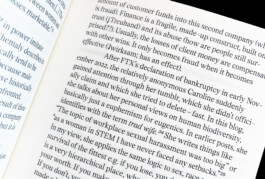
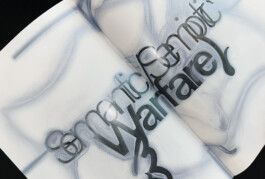
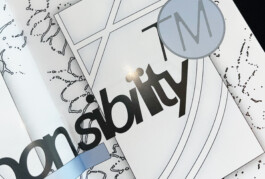
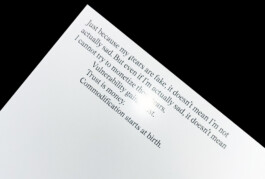
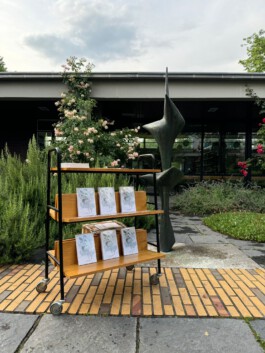
The Virgin, the Cleaver and the Martyr
2023
6.1-spatial sound + textiles & UV-prints, installation at GfZK Leipzig
The spatial installation »The Virgin, the Cleaver and the Martyr« consists of a six-channel sound piece and various smaller material-based objects like textiles and window pieces. It is devoted to the writings and biography of Hrotsvit of Gandersheim. Born between 912 and 935 during the Ottonian dynasty she lived as a canoness in the monastery of Gandersheim in what is now Lower Saxony in Germany. The artistic work focuses on one of her dramatexts called Dulcitius–The Martyrdom of the Holy Virgins Agape, Chionia, and Hirena. There the story of three young women is told, who hold up their heads against their emperor and eventually die as martyrs. The sound piece retells the key-scene of the play–taking place in a kitchen at night – and partakes in its most absurd moment hovering between horror, violence and the grotesque, the fringes of symbolism, various ways of gazing and questions of showing and not-showing. Written by Hrotsvit of Gandersheim & Tatjana Stürmer, composition by Lukas Rehm, vocalised by Anette Wanner, Stine Marie Fischer, Clare Michelle Tunney, installation photographs by Alexandra Ivanciu, commissioned by GfZK Leipzig, »Looking For a New Foundation« (11.3.–20.08.2023), curated by Franciska Zolyóm and Hanar Hupka. Language: English, 13:12 min.
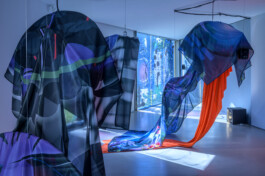
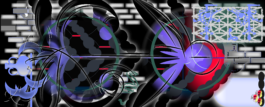
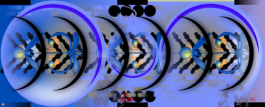
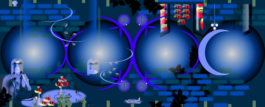
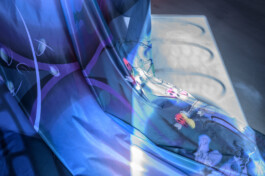
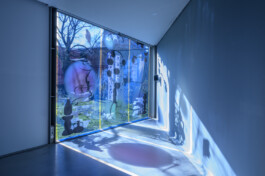
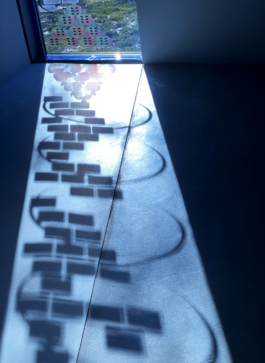
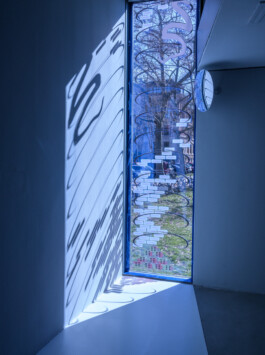
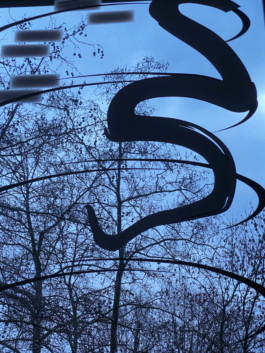
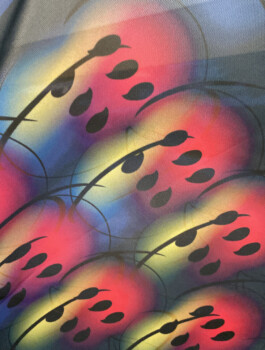
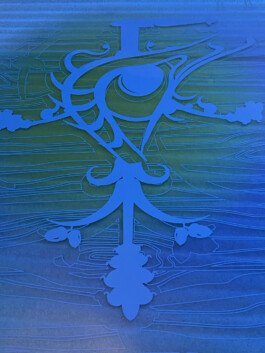
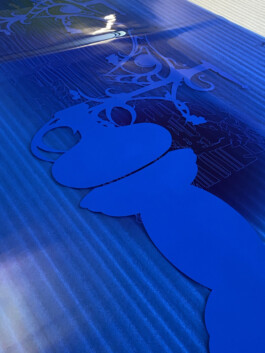
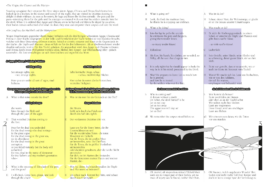
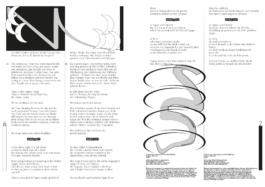
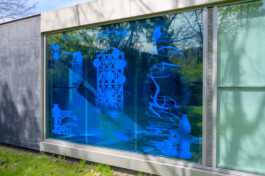
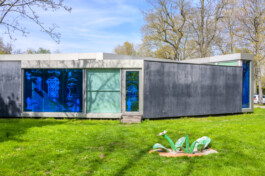
Looking For a New Foundation
2023
Scenography; textile, silkscreen print, plaster casted tears
Creation of the scenography for the exhibition »Looking For a New Foundation« at GfZK Leipzig with Alexis Blake, Cihan Çakmak, Vajiko Chachkhiani, Pennie Key, Tatjana Stürmer and Leyla Yenirce.
The human body remembers and tells stories, adapts and resists in various ways. In interaction with others, it constantly changes and (re)forms itself. However, people are constrained far too often by societal expectations that conflict with their self-image, needs and desires. The exhibition, accompanying events and co-operations focus on the search for new, resistant interpretations of the body and the agency that arises from self-determined attitudes, statements and gestures. Each artistic position is accompanied by a Textkörper-object carrying individual quotes by the artists in their surfaces. Their necks, they bend and move. Their relief-surface speaks to the tactile desires of our hands. Teardrop shaped weights press down on the fabrics and distort the text as a result. They are remnants on how deficient language can be sometimes.
Curated by Hanar Hupka and Franciska Zólyom, in cooperation with Julia Gerke. Silkscreenprint on textiles with Monochrome Leipzig. Collaborative project with Diane Hillebrand.
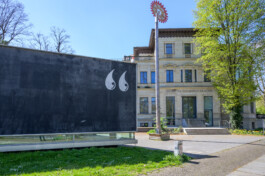
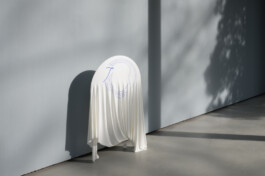
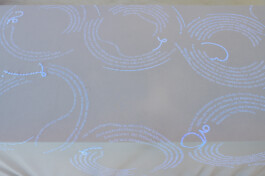
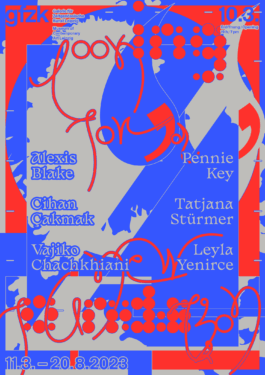
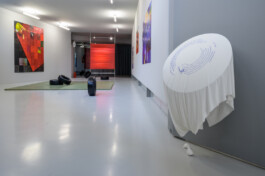
333
2022
Publication
Publication design for artist Lukas Rehm, 2022. Borrowing its form and structure from that of a graphic novel, »333« interweaves moving image works by Lukas Rehm with textual fragments from transcripts, retrospective descriptions or referential sources that inform the artist’s process into a narrative of new interdependencies. Sensing for threads such as affect, barriers, memory, knowledge production or post-human timescales, this publication transposes still images and quotes into an analogue sequence echoing the temporal, spatial and sonic dimensions of installative and filmic experiences. Design collaboration with Rudy Guedj, published by Building Fictions, ISBN: 978–90–827712–9–9 *Selected as one of the Best Dutch Books 2022, launched at REDO festival in October 2022.
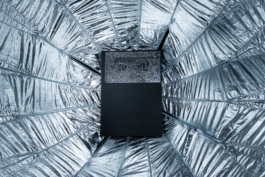
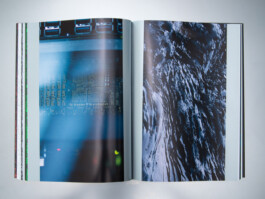
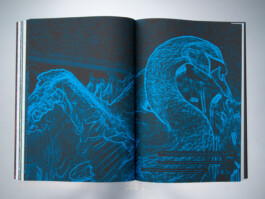
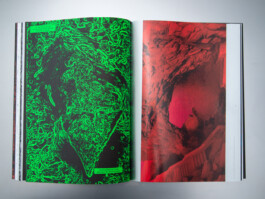
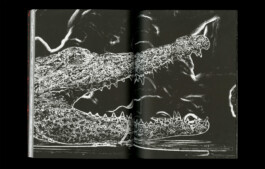
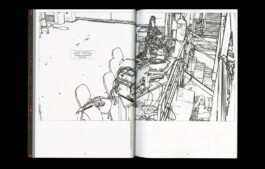
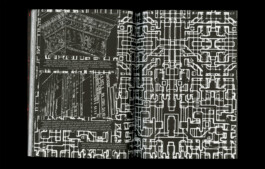
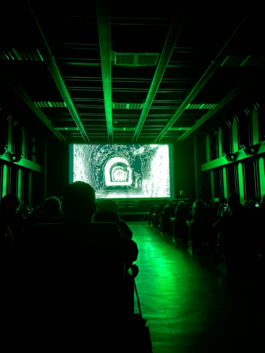
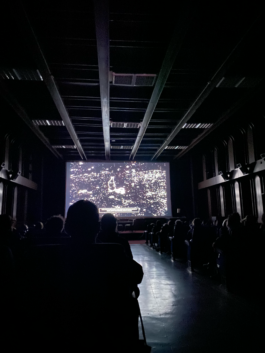
Pitch Blender
2023
Record Design
Artwork for Zoë Mac Pherson's released new EP »Pitch Blender«, © SFX 2023. Written, performed, recorded, and engineered by Zoë Mc Pherson, mixed by James Ginzburg, mastered by Joker, mut by Lupo Lubich.
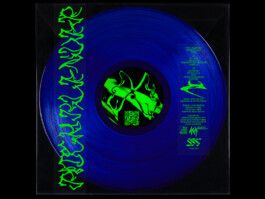
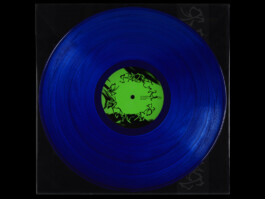
Tomb Series VANTA (Recovery)
2022
NFT
»The Berlin Key« (2022) is part of a series set in an expanded universe based on David Rudnick's TOMB Series. As a fictionalized adaptation of Bruno Latour's text »How to do Words with Things«, it is a proposal to recover and excavate other NFT components from the Tomb Series. The three NFTs are conceptually derived from the three components of the Berlin Double Key System described by Latour. The three keys are part of the collaboration with Gilbert Again. Read complete text online.

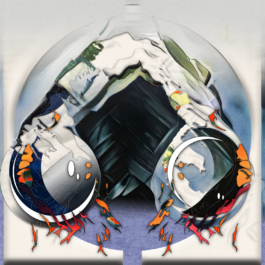
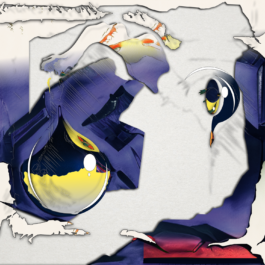
Death by Landscape
2021
film, 13:50 min
If death in »Death by Landscape« is conceived as a very specific form of life, not like life before death, but as another–transformed–form of life, the processes of dissolution visit places of the grotesque and the uncanny. The film was shot partly in infrared in the Pyrenees, where Lisa Fittko helped Hannah Ahrend and others escape in the 1940s, and in color in the man-made geometric groundwater rivers in the dry dunes of the Dutch North Sea. For the production of the film I collaborated with Lena Reitschuster (performer) and Lukas Rehm (camera).
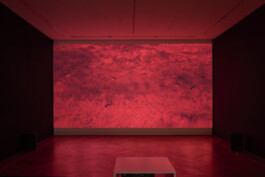
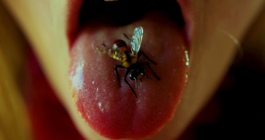
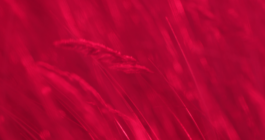

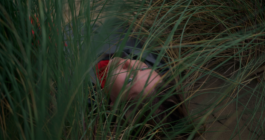
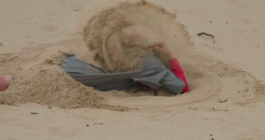
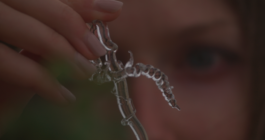
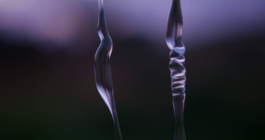
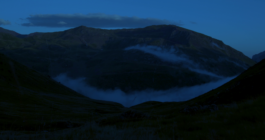
Death by Landscape
2021
installation with film, wood and glass objects
The installation »Death by Landscape« (2021) at Bundeskunsthalle Bonn is dedicated to the principles of dissolving and dissappearing as recurring motifs of female imagination. The title refers to the short story of the same name by Margarete Atwood and is also the title of the installations's two 14 min long looped films. In ancient myth Daphne transformed into a laurel tree to escape Apollo and the aforementioned story by Atwood tells of the disappearance of a young woman without a trace, preceded neither by an act of violence nor by a dubious event. Maybe she has transformed into earth, tree, lichen, fungus. A friend of the protagonist, who accompanied her to the forest at the time of the inexplicable event, later remembers the dissapeared woman trhough landscape paintings. Here, material assemblages gather traces and hints. Woodwork realized in collaboration with Diane Hillebrand and Verena Zenker.
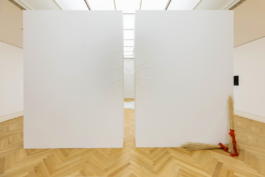
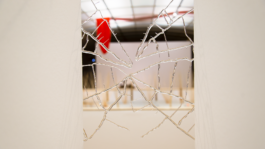
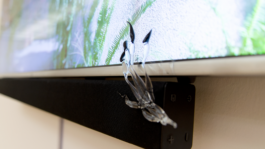
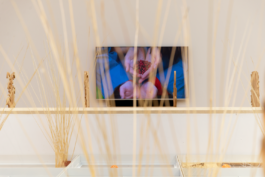
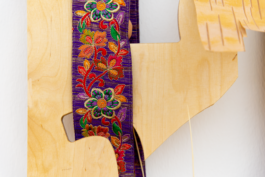
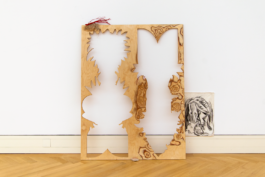
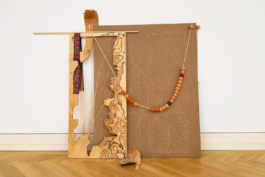
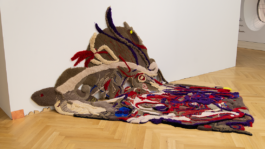
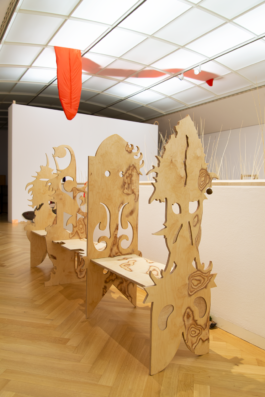
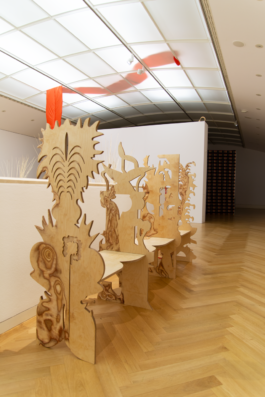
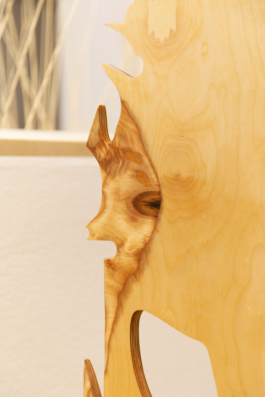
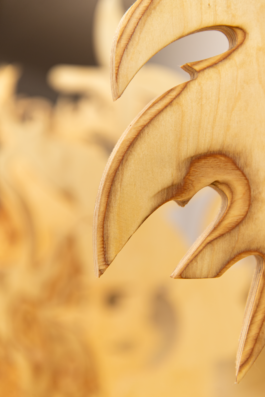
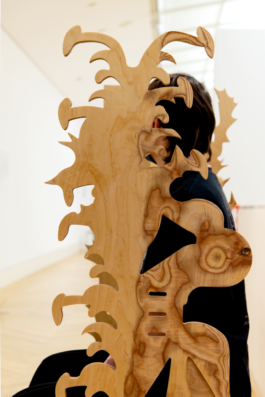
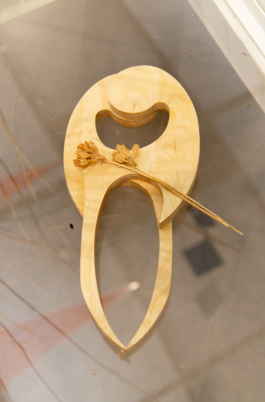
C at the End of A Line is A Whisper
2020
installation with film, ceramics and textiles
»C at the End of A Line is A Whisper« shows the critical, feminist appropriation and distorted mimicry of forms and patterns from a handwritten medieval book. These forms are made visible in the three dimensional space by assigning different materials like clay, wool, metal or fabric. Taking the artifacts' own agency seriously the radical incorporation of the visitors bodies is necessary to complete the process of translation or nachdichtung. During the exhibition in which the space turns into a metaphor of a »big lying book« once more a radically situated handmade copy is crafted. An experience of the intimacy of tactility is shared in this undisclosed associative space – acknowledging the yearning of the material. Collaboration with Corinne Riepert on textile work and with Manuel Sekou, who made the sound of the ´film, Lukas Rehm, camera of the moving image work and Lena Reitschuster, performer.
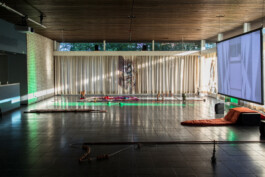
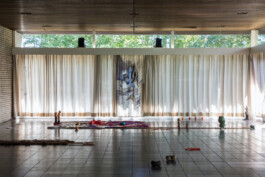
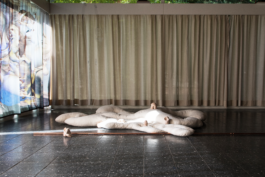
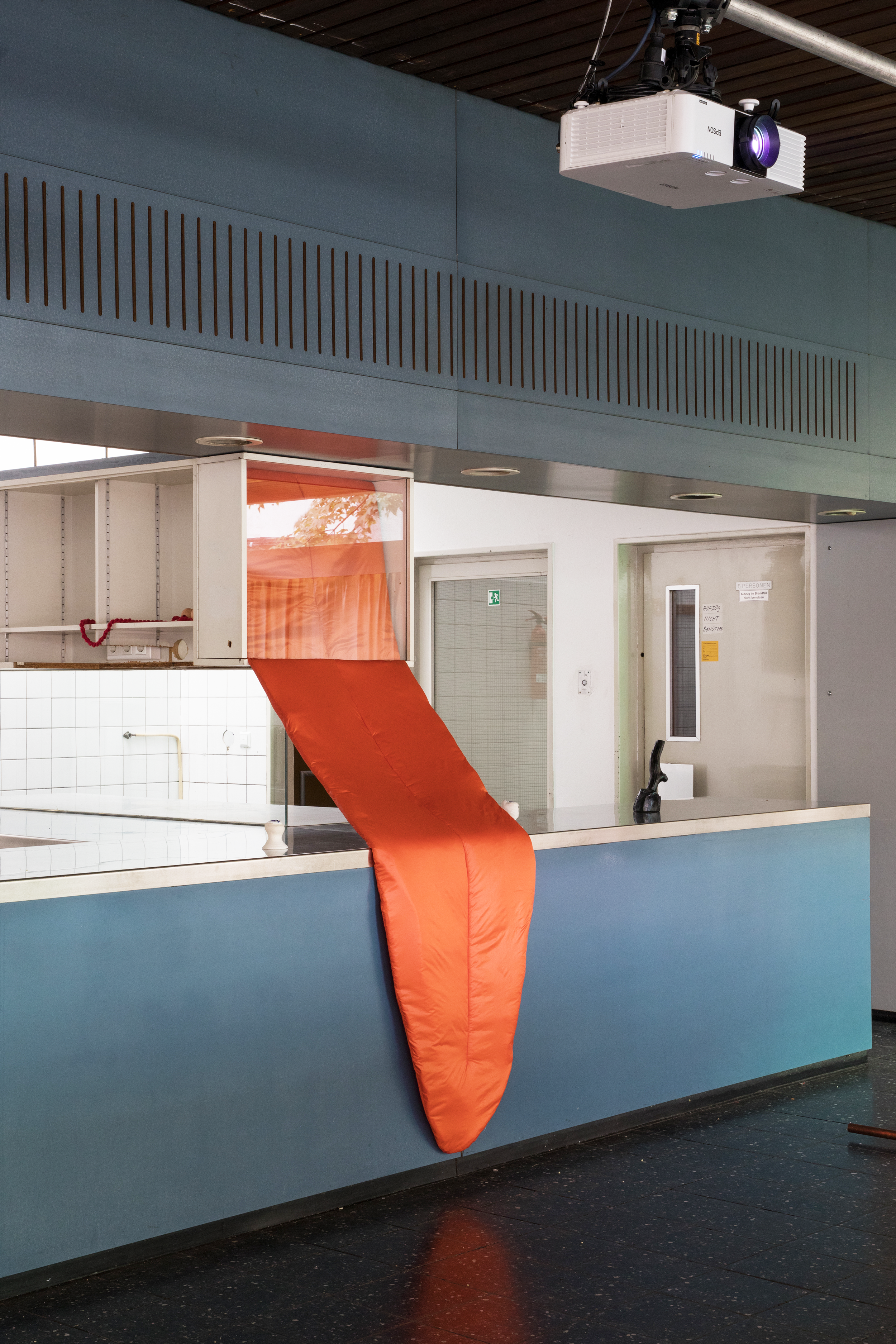
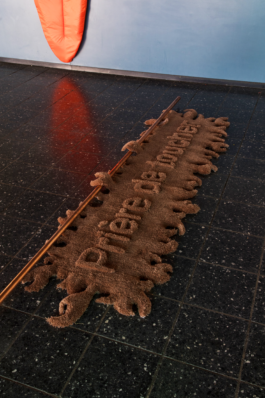
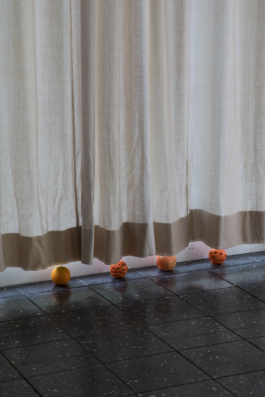
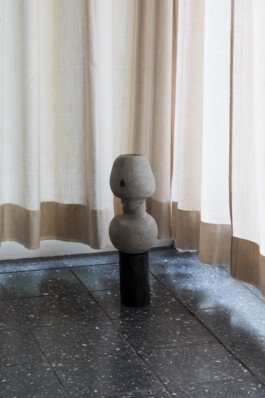
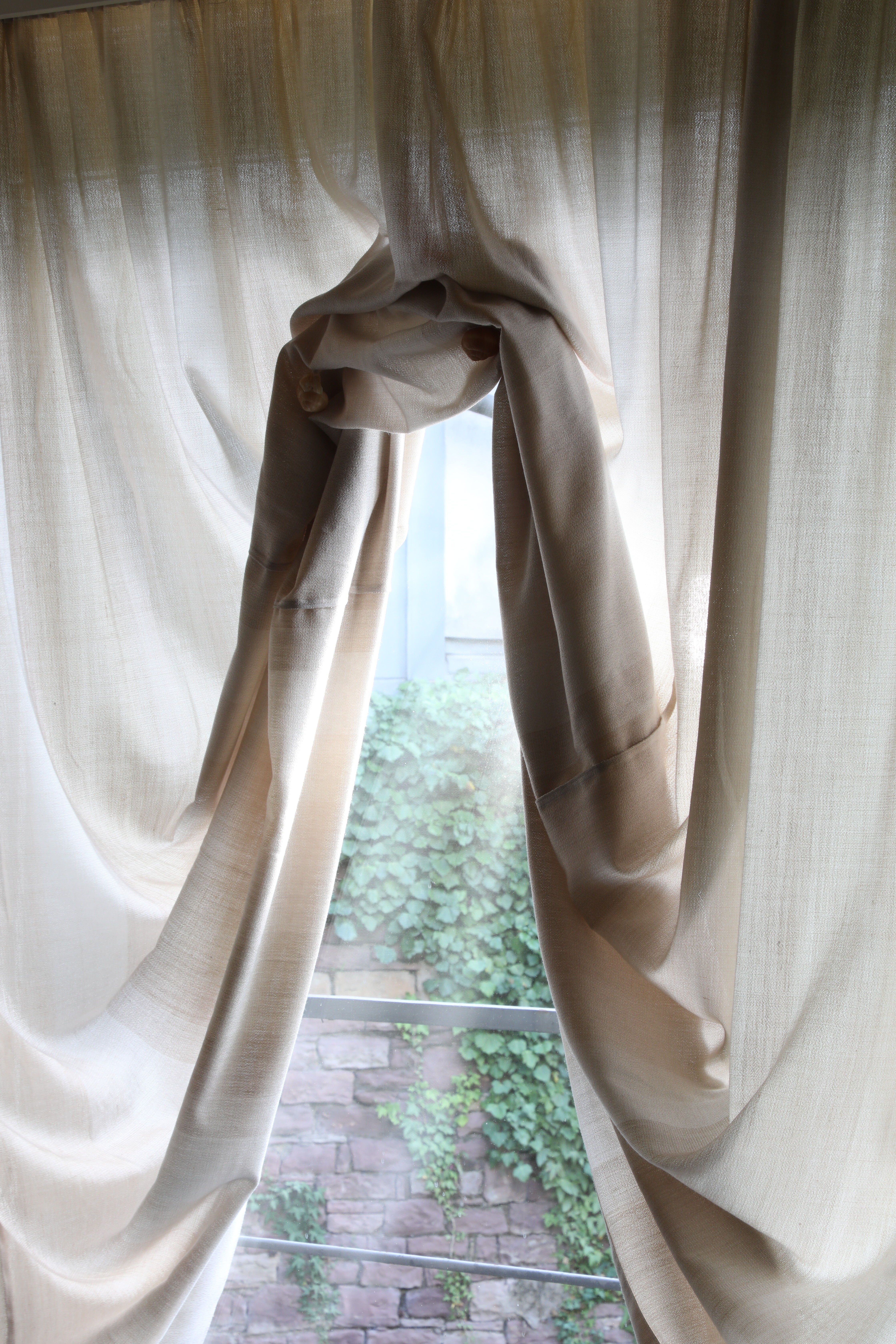
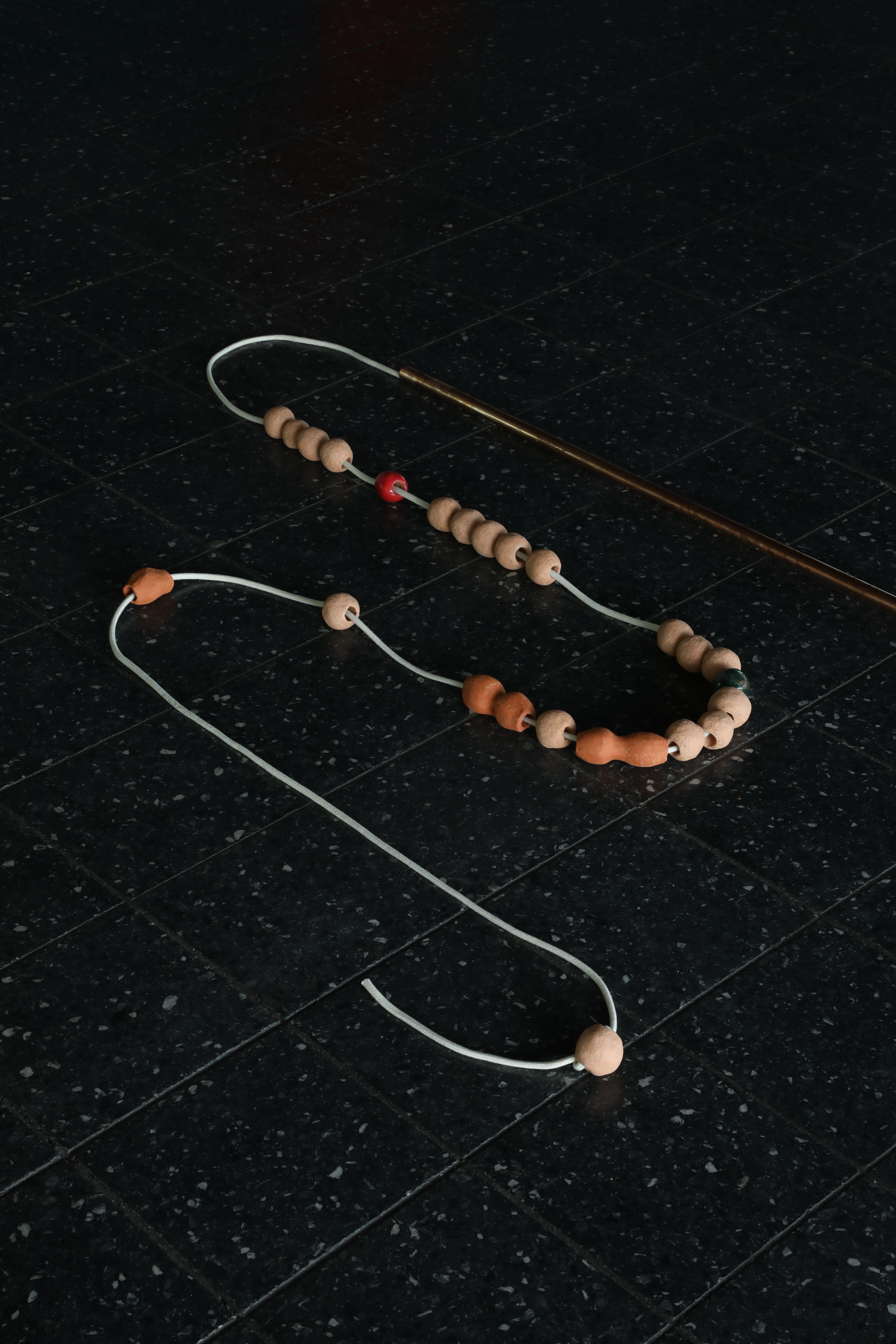
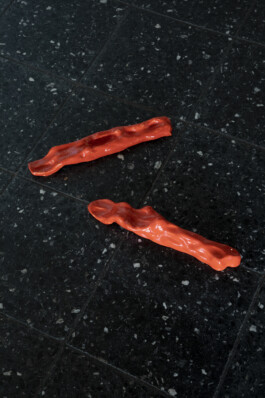
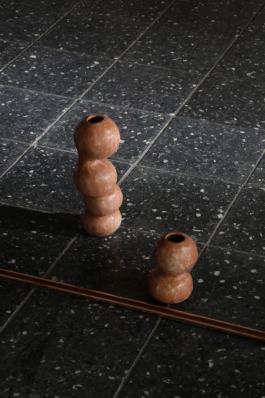
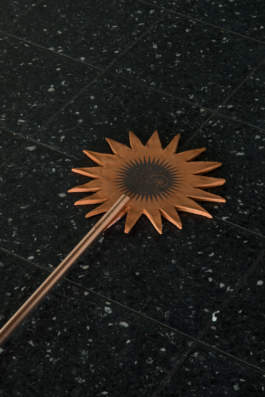
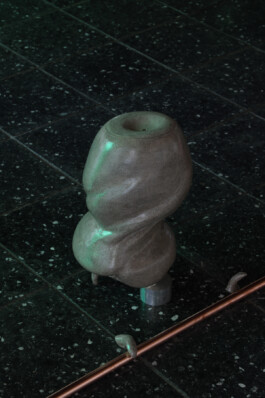
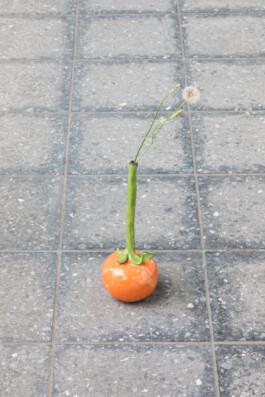
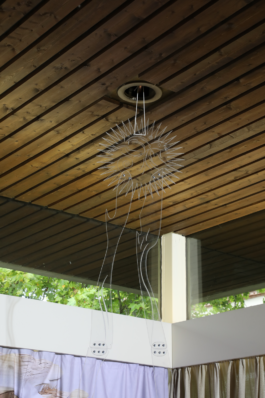
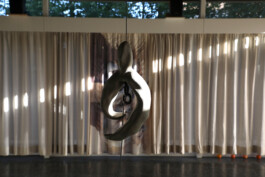
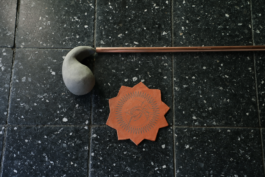
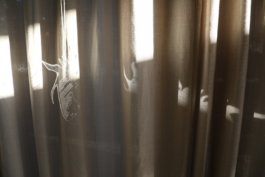
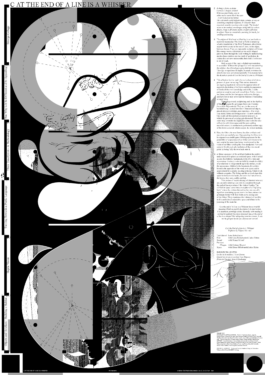
Escaping Countours & Bread of Dreams
2020
digital print on textile
The two curtains »Escaping Countours« & "Bread of Dreams« continue to imagine the stories that led to their reprint. Installation views at Kunsthalle Basel (2021/22; Installation view, Regionale 22, »… von möglichen Welten«, Kunsthalle Basel, 2021, view on Remy Erismann, Breakdancer, 2021 (front); Tatjana Stürmer, Bread of Dreams, 2020 (left), and Escaping Contours, 2020 (right). Photo: Philipp Hänger / Kunsthalle Basel) and Ornamenta Pforzheim (2022).
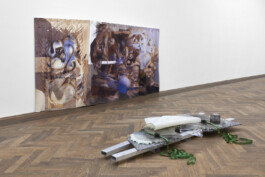
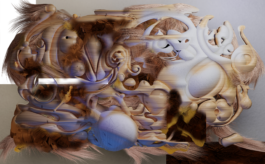
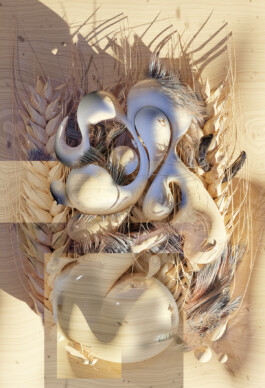
Rire et lécher
2020
film, 28 min
Materially-haptically decoupled from the manuscript, the traced forms are carried forward into the video work »Rire et lécher«. The empty archive of rolling shelves in the basement of the pavilion is actively anticipated in its functionality. As a double-bottom of the installation, it welds sign and space inseparably together. It is dominated by unstable systems of order. The speculative and the (female) imaginary become wanderers through forms of speech and their of speech and its writing down, through bodies and signs. Collaboration with Corinne Riepert (textile), Manuel Sekou (sound) Lukas Rehm (camera) and Lena Reitschuster, performer.
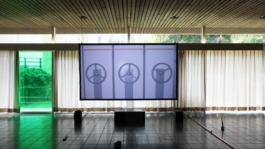
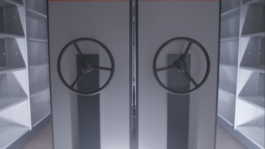
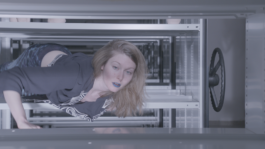
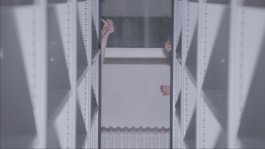
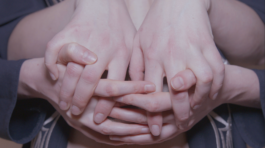
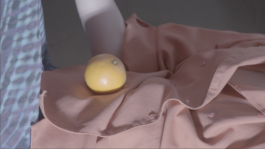
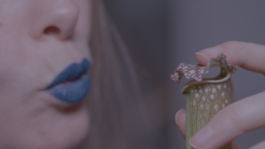
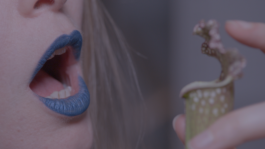
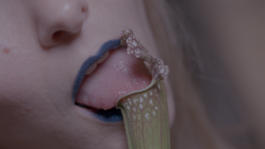
Bad Reading Table
2020
15m long wood table
The »Bad Reading Group« (initiated by Diane Hillebrand) came together in preparation for the exhibition »Bad Readings« (2020) at Badischer Kunstverein in Karlsruhe, Germany. For this occasion a 15m long table was developed that serves as a conference table but also carefully interveaves the regulations for encounter during Covid. Through the playful use of ornamental shapes and the dimensions of the piece of, we were able to come together during the reading group safely but physically. At a distance of 1,5 meters, up to fifteen people can be seated in the irregular indentations. In the exhibition the table then transformed into the scenographic element and exhibition display. The table surface carefully rests on historical furniture pieces and peasant chairs. Read more: Passe-Avant: How to Become a Bad Reader by Benedikt Seerieder
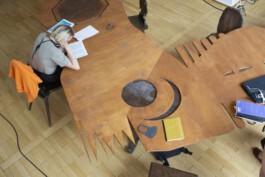
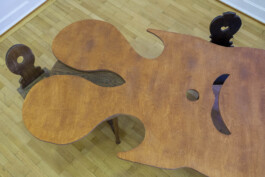
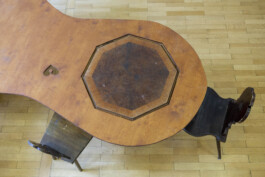
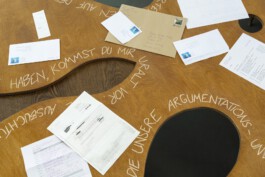
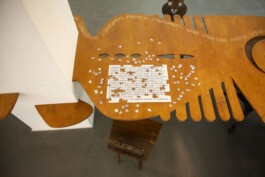
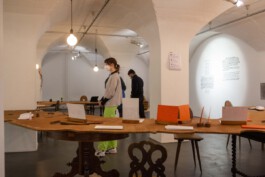
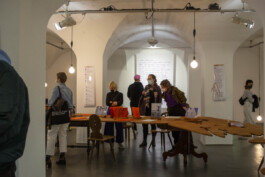
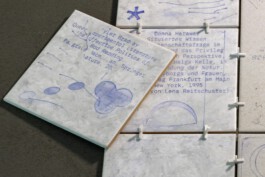
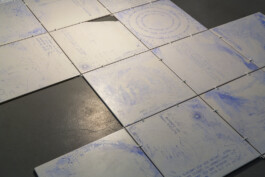
"Constructions of an Invite / Citation
2020
UV-print on tiles
The exhibition by Diane Hillebrand »Constructions of an Invite / Citation« (2020/21) in the old baroque castle in Bruchsal collects and recontextualizes forms, lines and fragments of the bourgeoisie and architecture. The content on the tiles is detached from the form, as is the case today with the historical replica of the castle and its contradictory functionality – used as a space for representation in the past, the space of the castle is nowadays used for the organs of the democratic parties in Bruchsal, there is a kindergarten and also the mai policestation. We made use of vernacular and public parts of plants, scraps of paper, pencil notes and demographic signs. In our work we wanted them to act like punctuation marks from everyday life, giving syntax to the semantics of the artificial signs. Collaboration with Diane Hillebrand on tiles, image and print.
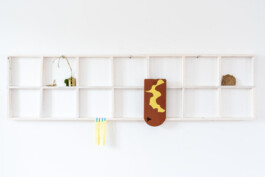
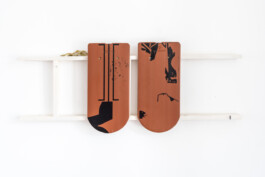
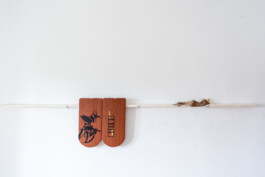
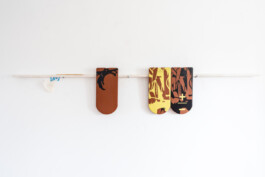
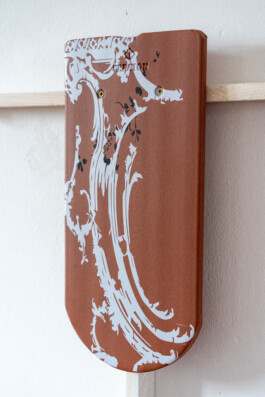
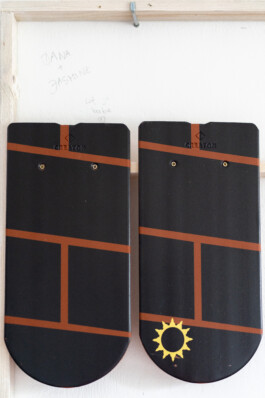
Castor&&Pollux
2019
publication
The music theater »Castor&&Pollux« combines the well-known ancient myth about the love of the twin with current posthumanist and transhumanist fabulations from the tech utopias of Silicon Valley and research on neuromorphic computer systems. Via essays by Fahim Amir, Janina Loh, and Dirk Baecker, among others, the publication accompanies and expands the contexts of opera. Textile prints activated the formal language on stage. In it, images of production combine with graphic derivations from blueprints to prototypes of new computer architectures, scientific representations of machine intelligence as well as primary forms between mathematics and myth. The music theater production was conceived by Lisa Charlotte Friederich, Lukas Rehm and Jim Igor Kallenberg, and premiered at the International Music Festival of the Heidelberger Frühling. The publication was co-edited & designed by Tatjana Stürmer in collaboration with Lena Thomaka, published by Wolke-Musikverlag.
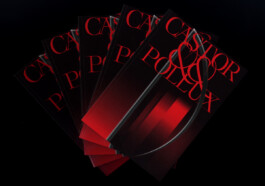
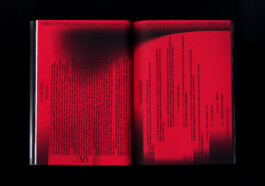
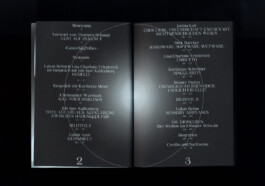
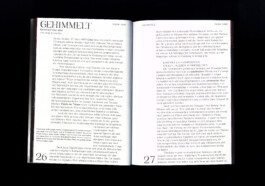
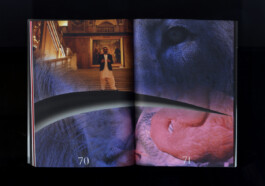
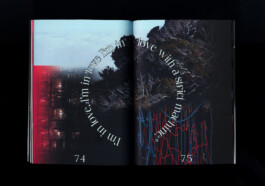
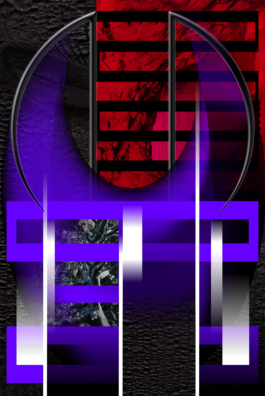
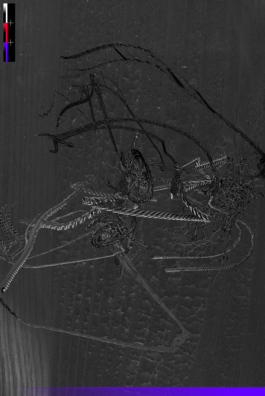
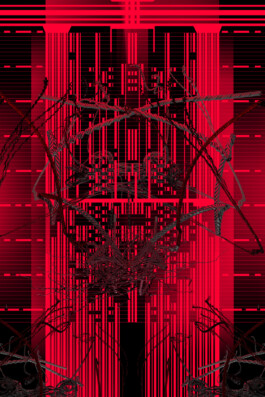
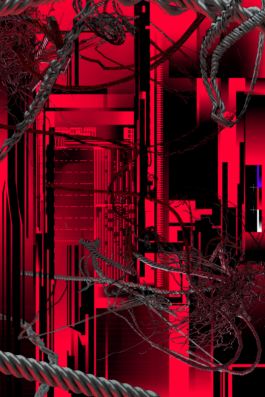
Inhale, Aerosol, Recovery (Non Sequitur)/luxxuryproblems
2019
graphic design of LP
The first vinyl release on SPA recordings is at the same time the first full-length album on the freshly founded music label from Cologne. It provides a platform for luxxuryproblems aka Manuel Sékou, who already appeared on the compilation »safe needing attention«, which marked the start of SPA in early 2019, with the track »environments (variations)«. The album »Inhale, Aerosol, Recovery (Non Sequitur)« presents a cross-section of his musical work. The ten tracks quote and draw from a bunch of genres, such as bass music, trap, trance, industrial, as well as ambient and more abstract styles, and range from broken club hymns (»decompression«) over heavy bass sketches (»extract«) to ethereal soundscapes (»aluminium«).
Each track negotiates associative imagery, driven by textures, samples and different styles of composition. Clusters of meaning, containers of expectations–moments of hectic that dissolve into passages of relief–blending energetic moments into fragments of thought. Vague references are drawn between sharp attentiveness and zoned out trance.
»Inhale, Aerosol, Recovery (Non Sequitur)« is an essay about the variety of (sensory) impacts and information overflow. Listen to the record here.
